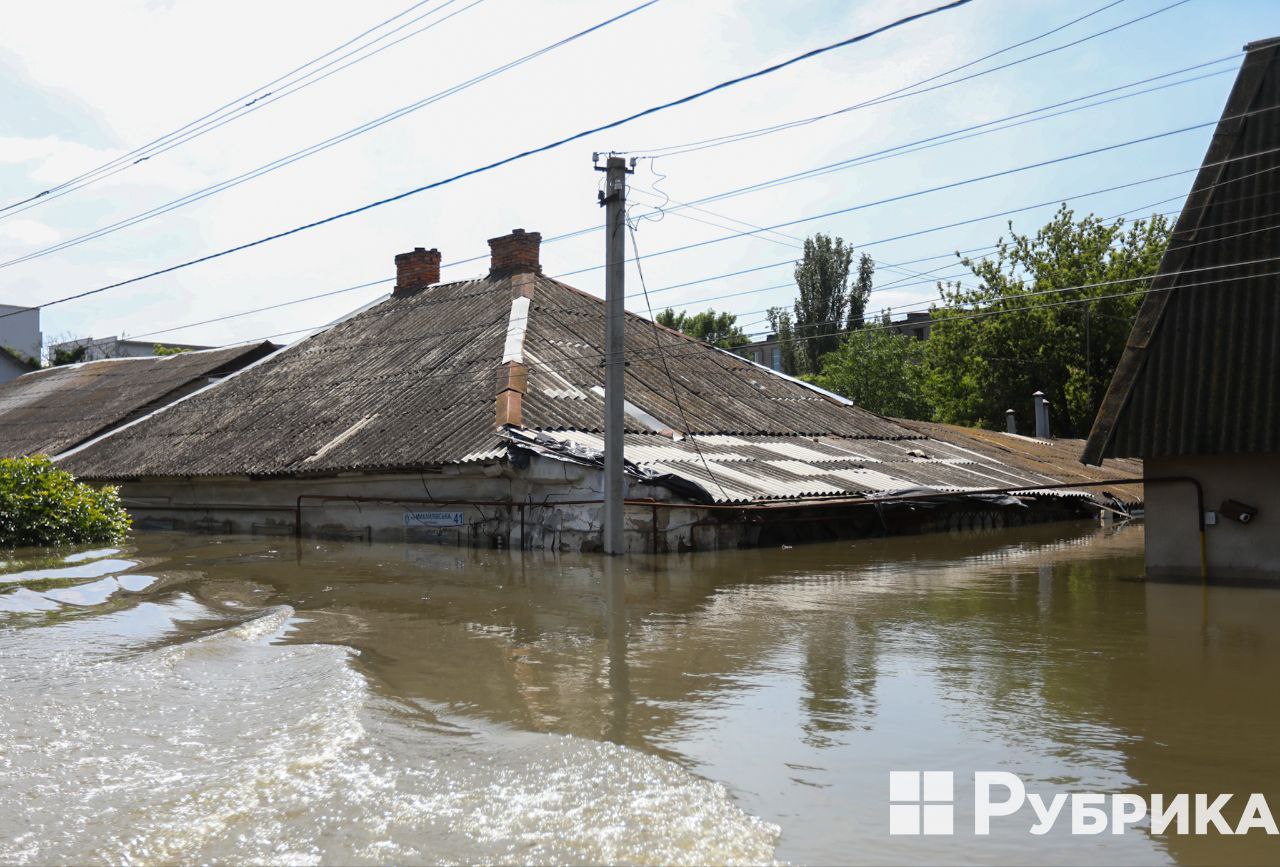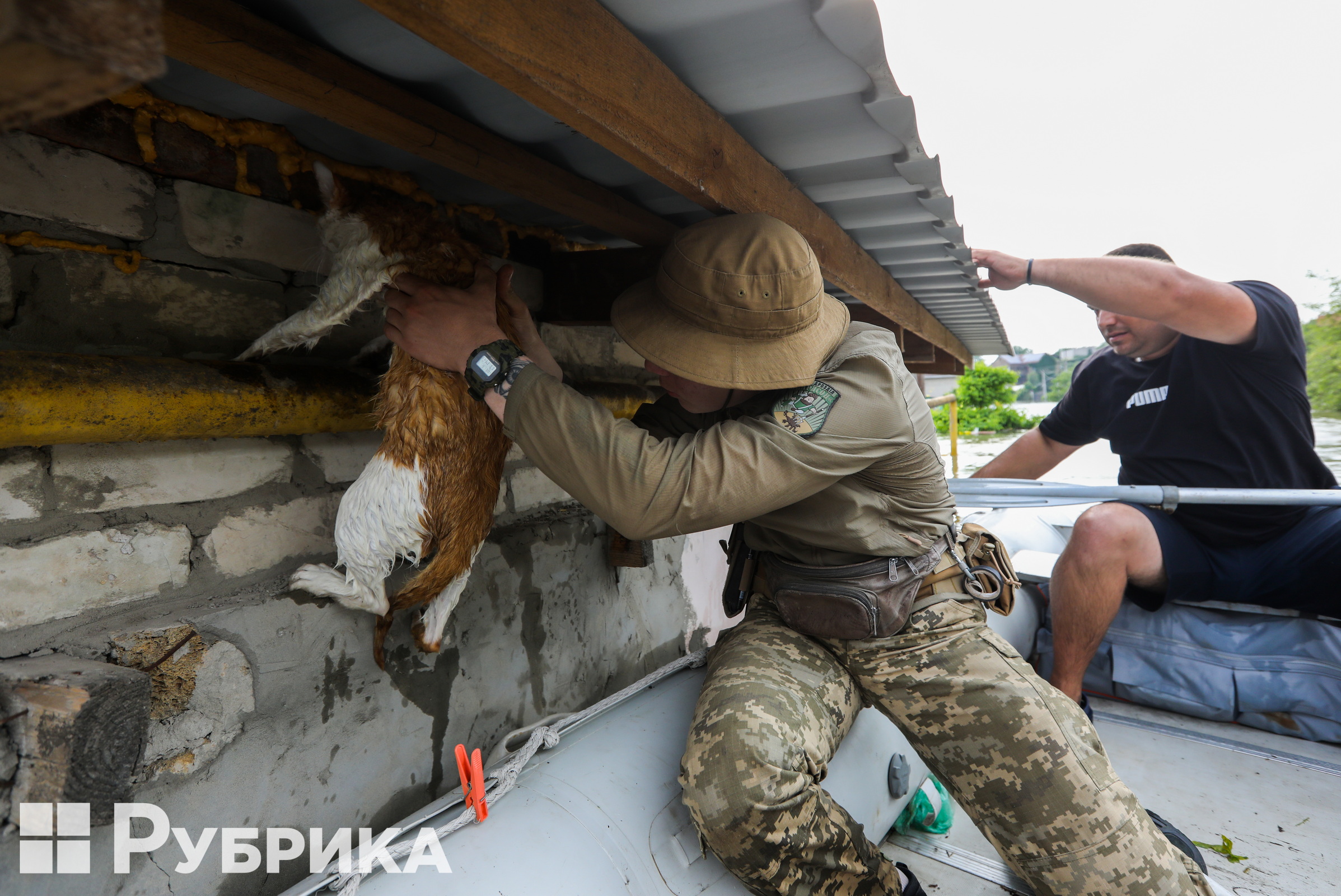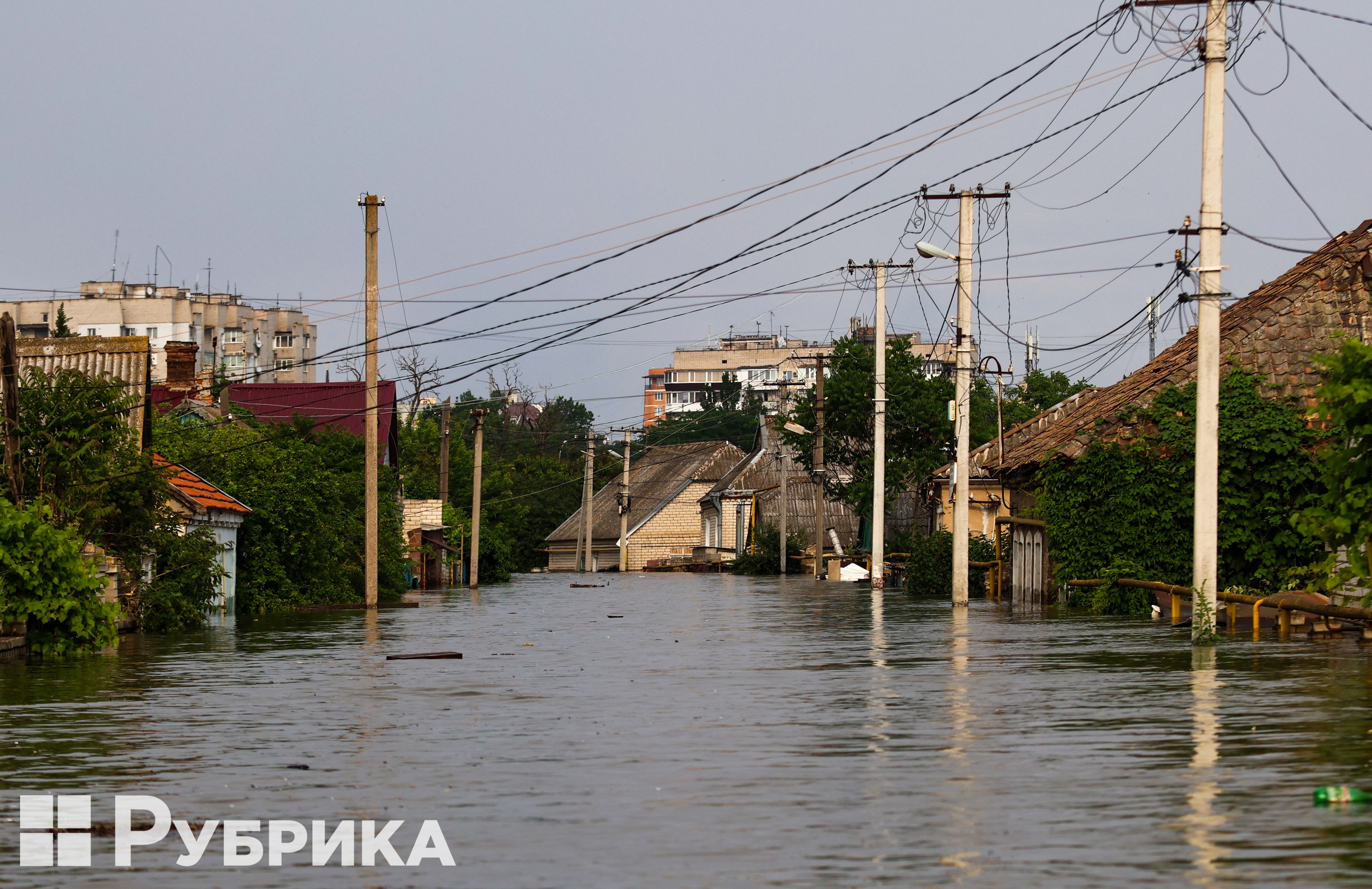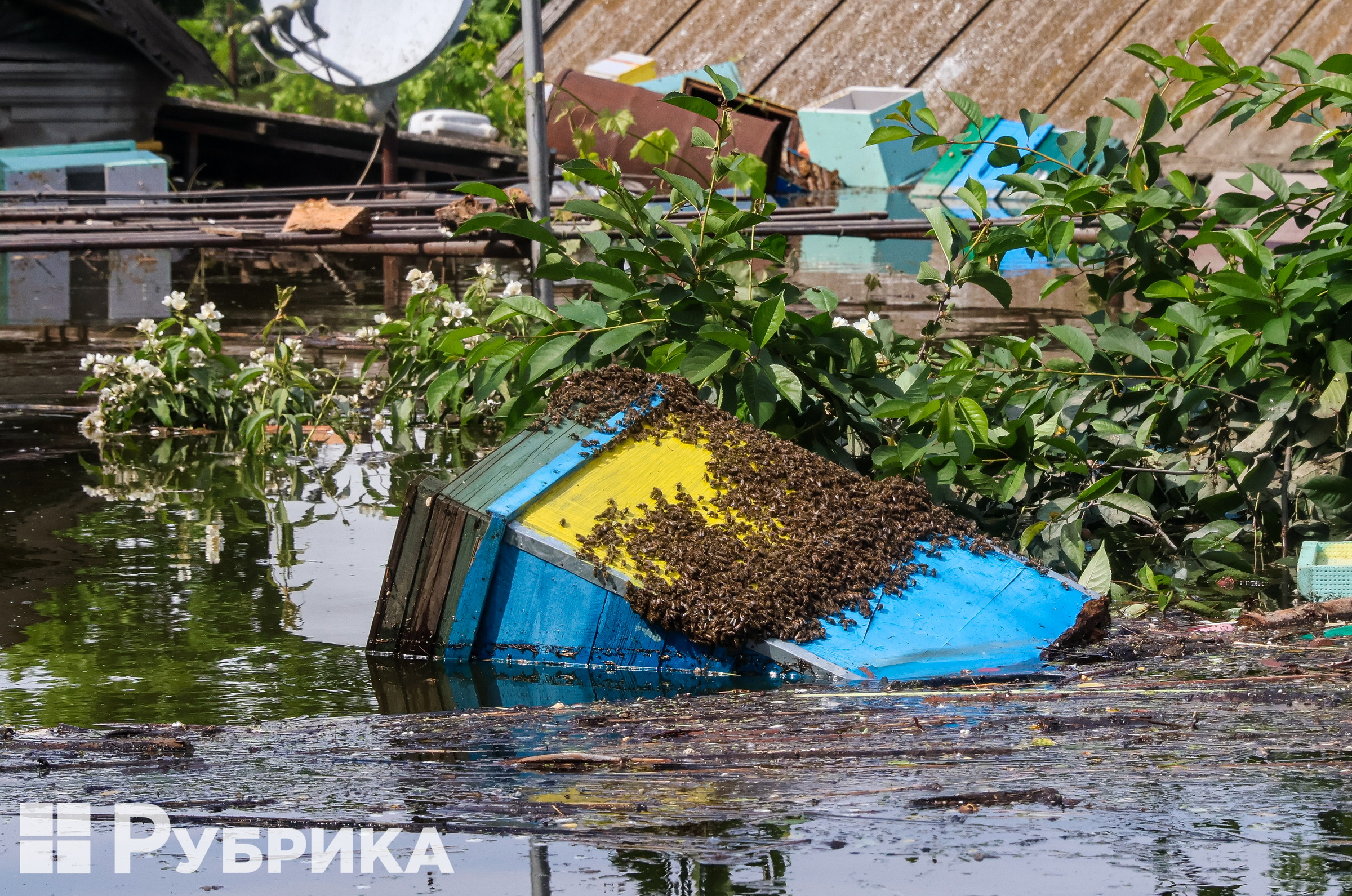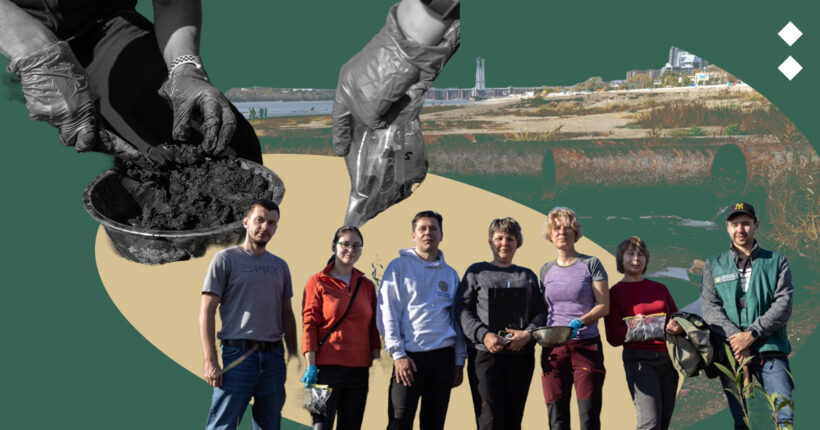
What's the problem?
A stroll through the desert of ancient pesticides and industrial waste
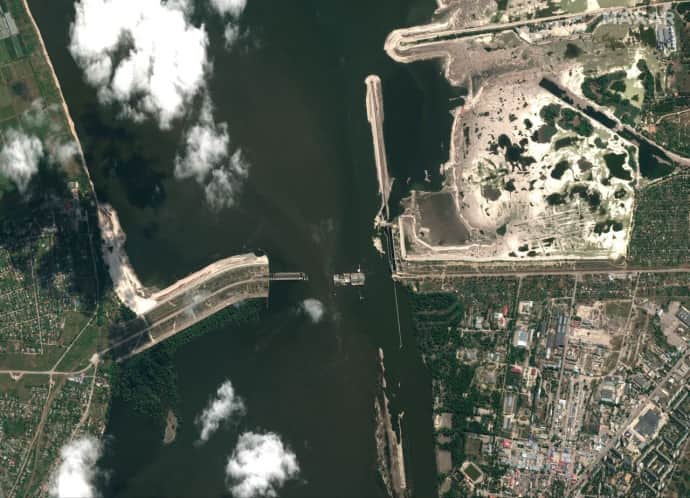
Kakhovka Dam destruction, June 6, 2023. Photo: Maxar Technologies
Specialists from the Czech environmental organization "Arnika" and the Ukrainian ecologists from the "Clean Air for Ukraine" campaign have published the first research into the contamination of soils and sediments caused by the destruction of the Kakhovka Dam.
Experts took seven samples — five from the Dnipro River and two from craters left by Russian missile strikes — in July 2023 for testing, just a month after Russian forces destroyed the dam in the occupied city of Nova Kakhovka and the reservoir upstream that used to hold the water, ran dry.

Map of the locations where experts took samples in Zaporizhzhia. Source: Report "First Research of the Contamination of Sediments from Kakhovka Reservoir," Dnipro-Prague, December 2023.
Researchers found alarming levels of DDT, a chlorinated pesticide considered carcinogenic, and other toxins, such as arsenic, mercury, and chromium. The survey of the area that used to be covered with water, namely, the central beach, a popular recreation spot in the city of Zaporizhzhia, showed the worst results.
Experts discovered large sewage pipes near the beach during the water sampling. They suspect several local companies are illegally connected to the sewage system, making it impossible to know exactly what is being dumped in the area and where it's coming from.
"Some of the pollutants in the sediment exceed limits — at least those compared with the same limits in the Czech Republic and those that don't meet the US Environmental Protection Agency standards," says Marcela Černochová, an environmentalist from the Czech nonprofit "Arnika." "These include petroleum hydrocarbons, exceeding sanitary limits several times over those in the Czech Republic, and polycyclic aromatic hydrocarbons. There are also high levels of heavy metals, such as arsenic and chromium. The residue of DDT — a dangerous substance banned in most countries — detected in the samples caused the most concern."
DDT and its various related compounds were once widely used as a chemical pesticide in agriculture and medicine to combat diseases like malaria. However, many countries put severe restrictions on its use due to its grave impact on human health, bird reproduction, and its ability to accumulate in the soil for decades. This persistent substance builds up and can migrate through food chains, causing health issues in animals and humans.

The bare bottom of the former Kakhovka Reservoir. Zaporizhzhia, October 2023. Photo by Majda Slamova
Researchers suggest that the sediments have accumulated these toxic substances over many years of dam operation, especially during the era of Soviet agriculture. However, they point out that the specific source needs to be identified.
"The high level of contamination in recreational areas is causing serious concern. Concentrations of DDT and HCH (a poisonous insecticide affecting the nervous system) suggest the proximity of highly polluted areas, such as old pesticide dumps," says Oleksii Anhurets, an ecology and sustainable development expert at the "Clean Air for Ukraine" campaign.
"We don't want to cause panic, but we must inform the local population and pinpoint the source. It would be very dangerous if toxins entered the food chain or if, for example, people took sediment into their gardens as fertilizer to grow vegetables. Once in the food chain, DDT can accumulate in the human body and have negative health consequences."

Marcela Černochová and Oleksii Anhurets are sampling bottom sediments of the Dnipro River, Zaporizhzhia region, October 2023. Photo by Majda Slamova
Analysis of samples from the beach in Zaporizhzhia revealed extremely high levels of other hazardous pollutants. The levels of benzo(a)pyrene, a substance that can cause cancer, exceeded more than 2,300 times. The carcinogen benz(a)anthracene, known to lead to thyroid cancer, was found at concentrations more than 500 times above the safety limit. The testing also discovered significant pollution with mineral oils, which usually come from heavy industry or oil refineries.
The second most polluted location was at the joining point of the Sukha Moskovka and Dnipro Rivers in Zaporizhzhia. The sampled sediments are highly contaminated with heavy metals, especially arsenic, manganese, and chromium. The likely cause differs from that of the beach and is related to industrial enterprises dumping wastewater into the stream, turning it reddish-brown with high mineral content.
Data from the study of bottom sediments
Chemical Substances | Concentrations (dry substance) | Threshold Values / Norms | Comment |
Chromium (Cr) | 14.2-256 mg/kg | Utilization of sediment deposits for agriculture: 200 mg/kg (C2) | Highest values in area 2 |
Mercury (Hg) | <<0.050 – 10 mg/kg | Utilization of sediment deposits for agriculture: 0.8 mg/kg (C2) | Area 1 |
∑DDT | 0.216-2872 ng/g | Utilization of sediment deposits for agriculture: 100 ng/g (CZ) | Area 1 + K2 (32.48 ng/g) |
7 PCB cong. – 7 indicator congeners | <0.02 – 57.21 ng/g | Danger threshold for agriculture: 20 ng/g (CZ) | Areas 1, 2, 4 |
You can download and read the complete assessment of the bottom sediments of the Dnipro River and soil samples from the Zaporizhzhia region HERE*
In late October 2023, project experts and representatives of Ukraine's State Ecological Inspectorate re-examined the Dnipro River and the mouth of the former Kakhovka Reservoir, again taking soil, sediment, and water samples at various locations near Zaporizhzhia, including at the city's beach. Experts have initial data but are still awaiting testing results on heavy metals. The good news for now is that none of the October samples exceeded the allowed limit for DDT.

Experts are taking bottom sediments on the beach of Zaporizhzhia in October 2023. Photo by Majda Slamova
"I want to stress that the most contaminated areas are in the central part of the city. One pollutant that exceeds the limits is polycyclic aromatic hydrocarbons, which are carcinogenic and mutagenic," Marcela Černochová told Rubryka. "We also found naphthalene at two locations. This element is used to produce lubricants, glues, and medicines. Still, we are waiting for the final results of the October samples."
What's the solution?
- Mapping environmental threats
Before the Russian invasion started in February 2022, the "Clean Air for Ukraine" program primarily advocated for stricter industrial air pollution regulations and developed a public monitoring network. However, its experts shifted focus and began addressing the damages caused by the full-scale war and protecting the population from new environmental threats. This year, the project introduced a new app called EcoCity, which alerts Ukrainians about air pollution, including chemical threats and radiation.
The sampling of the sediments has also been part of the long-term "Clean Air for Ukraine" program, carried out through broad collaboration between Ukrainian civil organizations, the Czech nonprofit "Arnika," and the "Dekonta" company to help Ukraine make the environment safer for its people.

Ukrainian and Czech experts at the bottom of the Kakhovka Reservoir, Zaporizhzhia region, October 2023. Photo by Majda Slamova
"The war adds to the consequences of old environmental burdens and multiplies already existing environmental risks," says Marcela Černochová, Arnika's project coordinator in Ukraine. "However, our findings show that eliminating historical environmental burdens should be an important part of post-war recovery plans. It shows that when Ukraine has repelled the threat of Russian missiles and invasion, we'll need to discuss how to protect its people from the invisible but even more insidious threat of toxic substances. It is a great honor for us to help Ukrainian civil society do this."

The bare bottom of the Kakhovka Reservoir, Zaporizhzhia region, October 2023. Photo by Majda Slamova
- Green reconstruction of war-affected regions
The research of sediments from the bottom of the Kakhovka Reservoir is the first part of a new long-term project called "Green Reconstruction of Ukraine: Sustainable Recovery of War-Affected Regions." It will run until 2025 in the Dnipropetrovsk, Zaporizhzhia, Kharkiv, and partially in the Kherson and Donetsk regions.
"We want to create and publish a map of environmental threats, laying down the groundwork for future research and resolution of these issues, like what needs to be done to restore ecosystems, how much it will cost, and so on," said Černochová. "Our ecologists will continue investigating areas where hostilities were happening and regions affected by them."
The report assessing risks caused by the potential contamination of sediments will be part of further research focused on the damages caused by hostilities.

Ukrainian and Czech experts at the bottom of the Kakhovka Reservoir, Zaporizhzhia region, October 2023. Photo by Majda Slamova
Experts are already mapping out environmental issues, conducting indicative studies, and advising local authorities on developing strategies to address these threats.
Author: Oleksandra Tron
Newsletter
Digest of the most interesting news: just about the main thing




